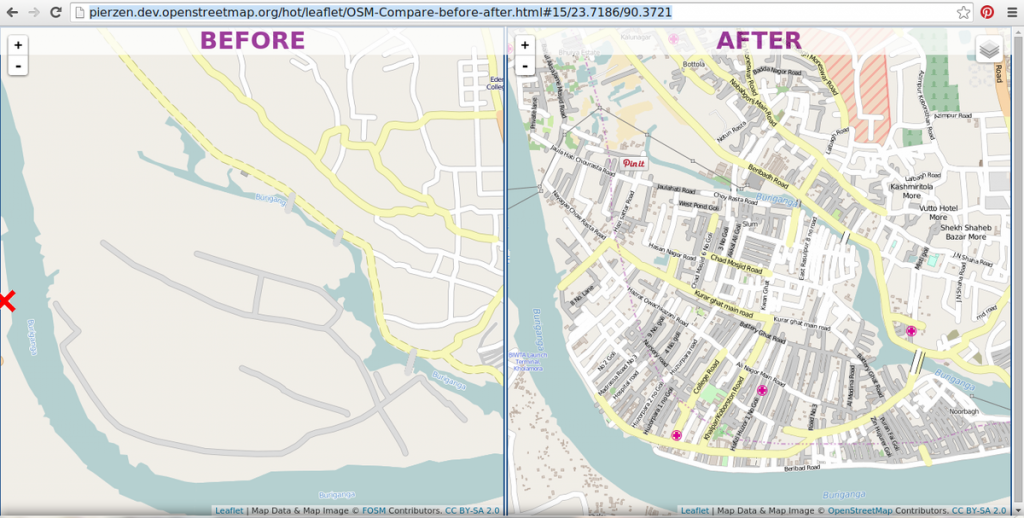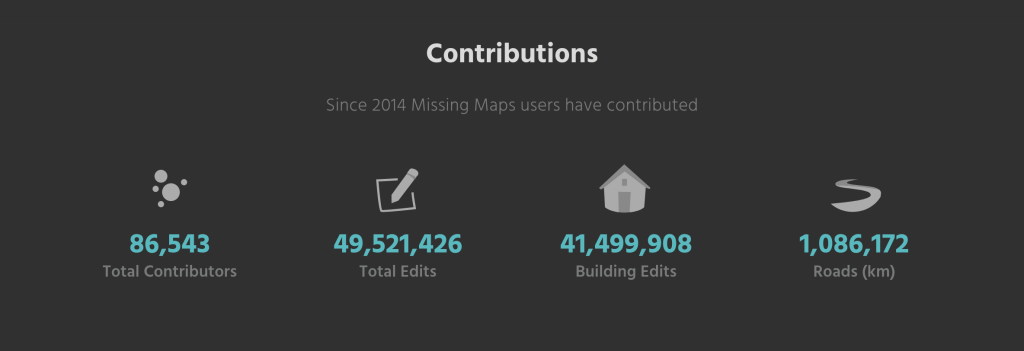
I recently had the opportunity to participate in a “mapathon” through Missing Maps, a collaborative initiative that aims to map “off-the-grid” parts of the world in order to improve humanitarian access and disaster relief efforts during times of crisis. The platform was designed and launched in September of 2014 by the American Red Cross alongside Doctors Without Borders. The project is an open collaboration that involves volunteers mapping streets, buildings, and infrastructure in high-risk areas into OpenStreetMap. Community volunteers then take these satellite maps and add in specific details, including what each building specifically is, before handing them off to humanitarian organizations that then use these maps to plan more efficient disaster responses. This project heavily utilizes OpenStreetMap (OSM), a software that actually originally involved a java-based applet on the OSM homepage. Over time, the basis of OSM has evolved into an online JavaScript editor known as iD.
The creators were likely motivated to create an initiative that enabled anyone with a working computer to help those in need. OSM was already in existence before the start of Missing Maps, and the creators of the initative likely felt that OSM could be better utilized through humanitarian efforts. Through its simple and easy-to-use online OSM editor, Missing Maps has impacted hundreds and thousands of people around the world who have suffered through crises. I was incredibly inspired by how simple yet powerful Missing Maps’ mission is, and it was amazing to think that I was able to potentially impact a small town in Kenya simply by mapping out a portion of their rural roads. And yet, the opportunities for further exploration and mapping are endless. There’s still a massive amount of rural area that needs to be mapped, and the 86,543 contributors thus far are ready to continue with their efforts to help the Red Cross save lives.

A video explaining how Missing Maps works (https://www.youtube.com/watch?v=wEEnOqmVfqM)
Sources used:
https://wiki.openstreetmap.org/wiki/History_of_OpenStreetMap
![[OLD FALL 2019] 15-104 • Introduction to Computing for Creative Practice](wp-content/uploads/2020/08/stop-banner.png)